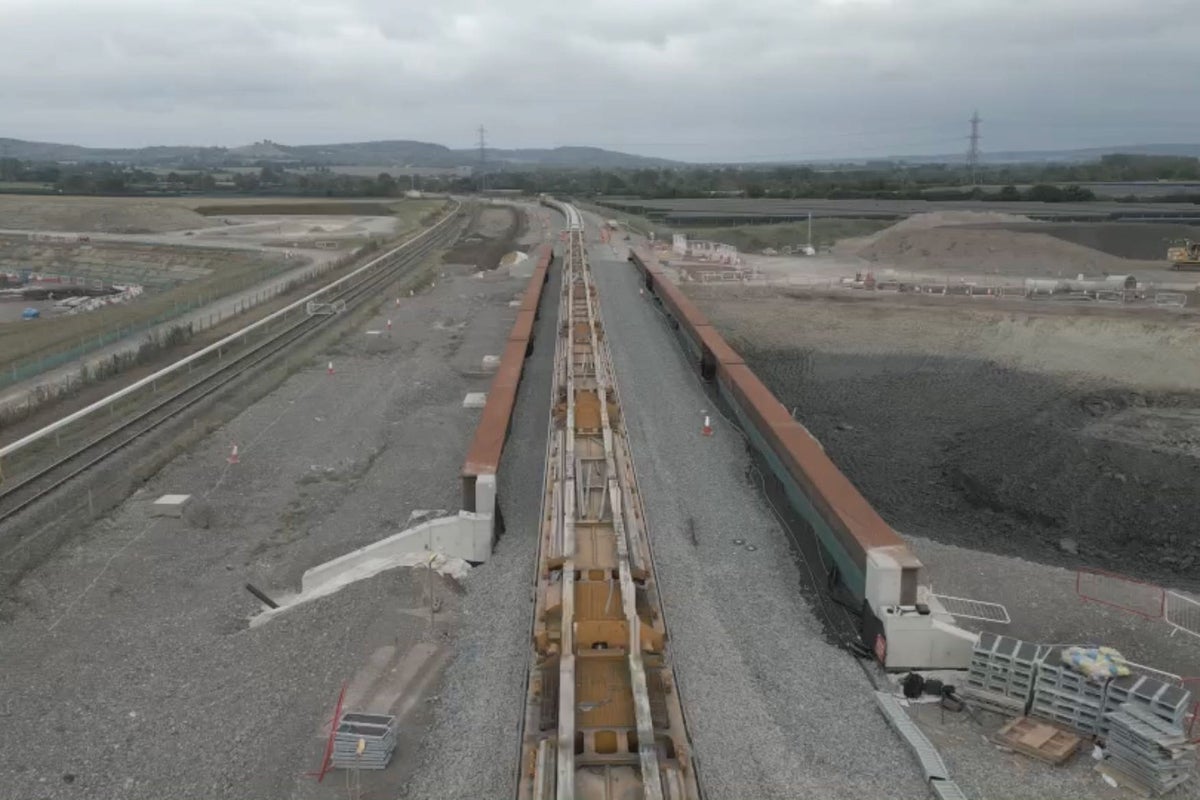
“I am proud to present the Integrated Rail Plan.” So wrote Boris Johnson at the start of a document that heralded a bright future for travellers by train in the Midlands and north of England.
The last prime minister but two promised: “The biggest ever government investment in our rail network, in redressing decades of underspending in the Midlands and North, and in levelling up our country. It builds three new high-speed lines, totalling around 110 miles of route and transforming connections to, from and between the East and West Midlands.”
Another minister described it as “the largest and most ambitious government programme of investment ever in the railway”. That was none other than Grant Shapps, the then-transport secretary, who took time out from shuffling the red/amber/green cards for Covid quarantine for international travellers to announce: “A £96bn strategy of rail construction and upgrades for the Midlands and the North to be delivered over the next 30 years.”
Grant Shapps blamed the failures of the Integrated Rail Plan on Covid-19— (Getty)
At the heart of the project was High Speed 2: a heroic effort to take the strain off Britain’s Victorian rail network. A new line would connect the North and Midlands with each other and with London. By transferring all the intercity passenger traffic to separate infrastructure, capacity would dramatically increase for the benefit of local and regional travellers, as well as freight.
The basic plan was for a Y-shaped line, with the stem of the Y linking London and Birmingham. In the Midlands, the line would split into a western leg to Manchester and an eastern leg to Sheffield and Leeds.
In addition, a separate project called Northern Powerhouse Rail would cross the Pennines, connecting Liverpool and Manchester with Bradford and Leeds.
The Integrated Rail Plan actually demolished the eastern leg, leaving only a spur running from Birmingham in the general direction of Derby and Nottingham. But at least the western leg survived. Or so we thought.
While Mr Johnson has long gone, Mr Shapps is still a cabinet minister. Yet, less than two years after his grand vision, this week he told the BBC that there were no guarantees the rail project would go ahead from Birmingham to Manchester.
He said: “We did not know there would be coronavirus, a one-in-100-year event.”
Actually, at the time he made his promise, Mr Shapps knew all about the Covid-19 pandemic. But the now-defence secretary was still prepared to be wheeled out to preside over the disintegration of his Integrated Rail Plan, saying: “If circumstances change, you have to look at the sequencing of the big infrastructure cash that you spend.
“Any government that doesn’t do that, any opposition that claims you don’t need to, is not fit to govern this country.”
With that last jibe at Labour, I guess Mr Shapps regarded the project as a job well done.
The opposition was even faster to disown the recent past. High Speed 2 was a project proposed at the very end of the last Labour government, 14 years ago. Now it looks like literally going nowhere fast, even if Labour regains power.
On Sunday 17 September, a senior Labour figure was unequivocal about the party’s commitment to High Speed 2. Nick Thomas-Symonds told the BBC’s PM programme: “We will build HS2 in full, and we will build Northern Powerhouse Rail in full. That’s the clear pledge that we’ve given.”
Evan Davis, the presenter, interjected saying: “Just to be clear, when you say ‘in full’ do you mean to Manchester, or do you mean to Leeds as well as Manchester – that was the original vision?”
HS2 has been significantly delayed throughout its construction— (PA)
Mr Thomas-Symonds replied: “It’s both to Manchester and indeed the eastern leg that you have referred to, to Leeds, but also Northern Powerhouse Rail across from Liverpool to Leeds – indeed the new line through Bradford.”
Six days later, though, Labour watered down the promise. Darren Jones, the new shadow chief secretary for the Treasury, said: “The Labour Party would love to see HS2 built, including the branch to Leeds. We’ve long said that.”
But he said no commitment could be made until “proper” information had been made available by the government.
That is the government that “paused” advanced work at London Euston station because it wasn’t sure of what it wanted from the terminus. Instead, it is content for trains to run to a patch of wasteland in West London called Old Oak Common, connected to the Elizabeth Line into central London.
The crucial eastern leg from Birmingham via Sheffield to Leeds was axed, even though that section delivered the most benefit. And now rumours are rife that the plan to extend from Birmingham to Manchester will be “paused” as well.
HS2 is the very definition of how not to run a railway project – and how to destroy a dream.







